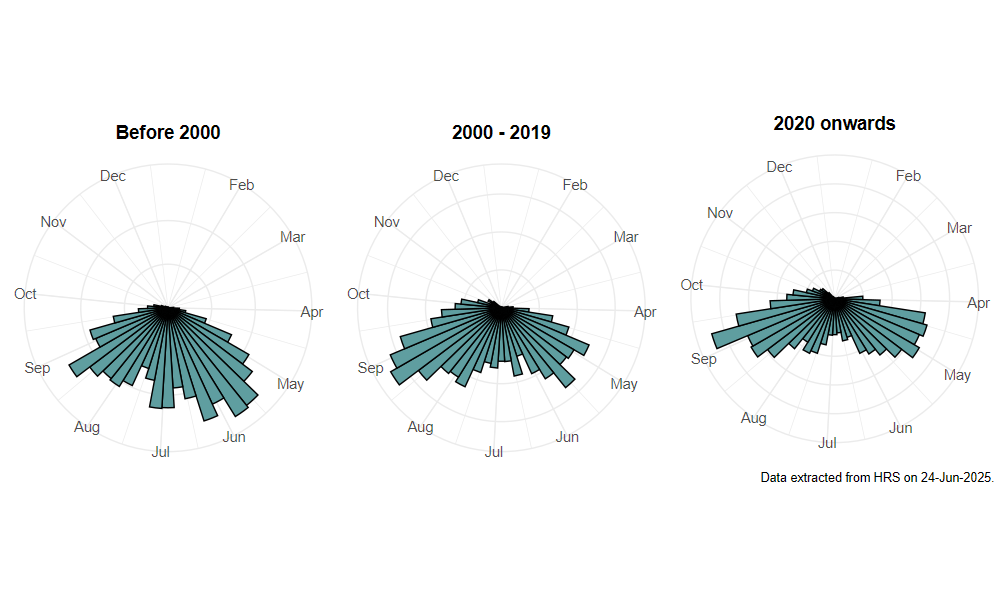Platycheirus scutatus (Meigen, 1822)
Identification
Identification difficulty = 4. ![]()
![]() according to Ball & Morris, 20241
according to Ball & Morris, 20241
Synonymy
This species was separated from Platycheirus splendidus by Rotheray (1998)2 and from P. aurolateralis by Stubbs (2002)3.
Biology
The larva preys on a variety of aphid species on low growing plants, bushes and low tree foliage. A species of woodland edge (both coniferous and deciduous) and scrub, including hedgerows, parks and mature gardens. Adults are usually found resting on sun-lit vegetation or visiting a wide range of flowers in clearings, tacksides, etc. It is multiple brooded and has a long flight period.
Flight period
The following plots show the number of unique records per week excluding those reported to be of immature stages.

Distribution
It remains a very common species that occurs widely throughout the British Isles but is as yet less well recorded from northerly areas.

Trends
The following plots show the Frescalo TFactor vs year and a map of the rescaled frequency (all records) for the species.
-
Ball, S., & Morris, R. (2024). Hoverflies of Britain and Ireland. WILDGuides (3rd ed.). Oxford: Princeton University Press. ↩
-
Rotheray, G. (1998). Platycheirus splendidus sp. n. from Britain formerly confused with Platycheirus scutatus (Diptera: Syrphidae). Entomologist’s Gazette, 49, 271–276. ↩
-
Stubbs, A. (2002). Advances in the understanding of the Platycheirus scutatus complex in Britain, including the addition of Platycheirus aurolateralis sp. nov. (Diptera, Syrphidae). Dipterists Digest (Second Series), 9, 75–80. ↩